As many of our readers and volunteers know, our spring bioassessment season is one of the major monitoring efforts of the year. We use a state-wide protocol that includes detailed habitat measurements and macroinvertebrate collection to assess creek health.
Volunteers are an integral part of this effort. Our volunteers come to us from all walks of life, from seniors to college students and everything in between. We kick off the season with an orientation, and then volunteers join us on our surveys. Each season we usually have about 20 volunteers helping us monitor ten sites, collecting over 1,000 data points per site.
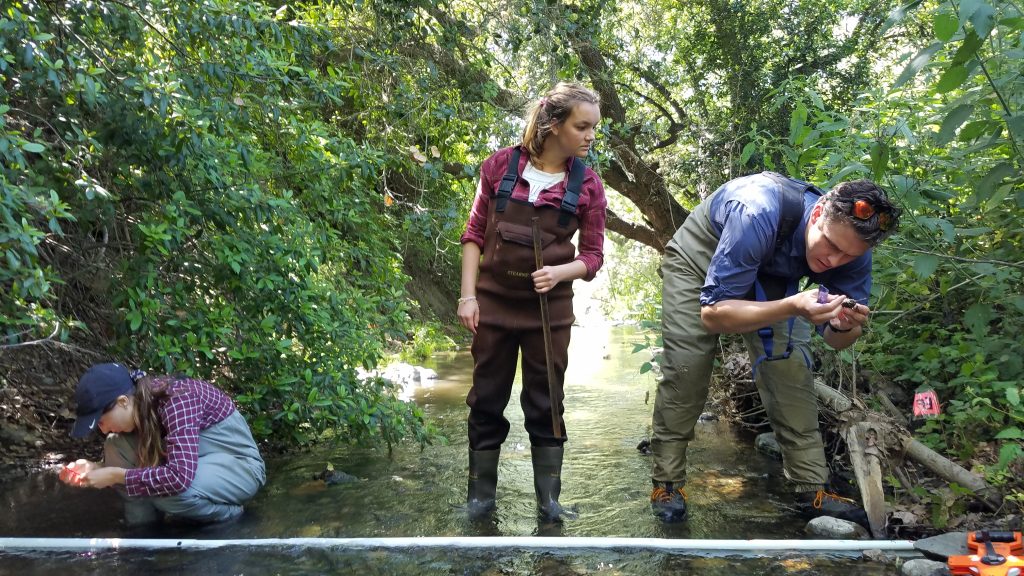
Spring 2020: a Season of Change
This past spring, we’d already begun planning our monitoring season when the stay-at-home order began, bringing big changes to our day-to-day operations. To keep our volunteers safe and healthy, the Estuary Program would have to find a different approach for the 2020 bioassessment season. After much thought, a field season was planned for three staff members using social distancing, facial coverings, frequent sanitization, and other protocols recommended by the CDC. We skipped sites where it wasn’t possible to maintain adequate social distancing.
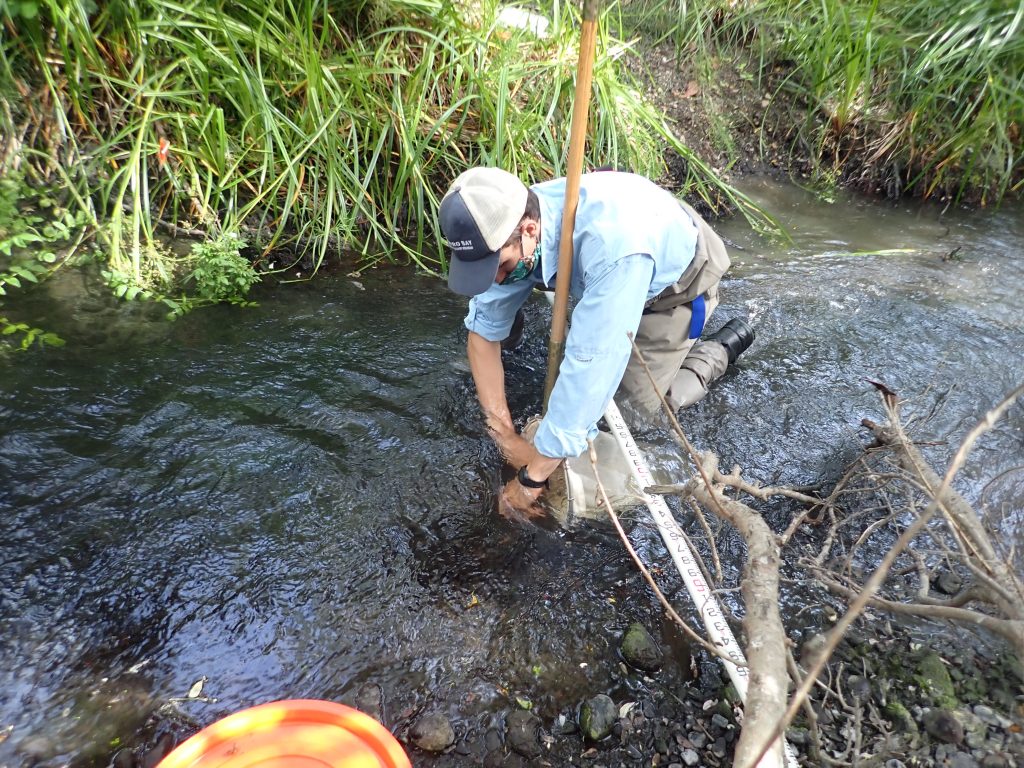
Although in an average year we survey ten sites, in 2020 we were only able to survey seven sites. While we are used to the challenges of debris jams, poison oak and stinging nettle, we had the added challenges of maintaining physical distancing in narrow stream beds while completing detailed surveys using fewer people than normal. This took careful planning (and plenty of coffee!), but the 2020 season was a success.
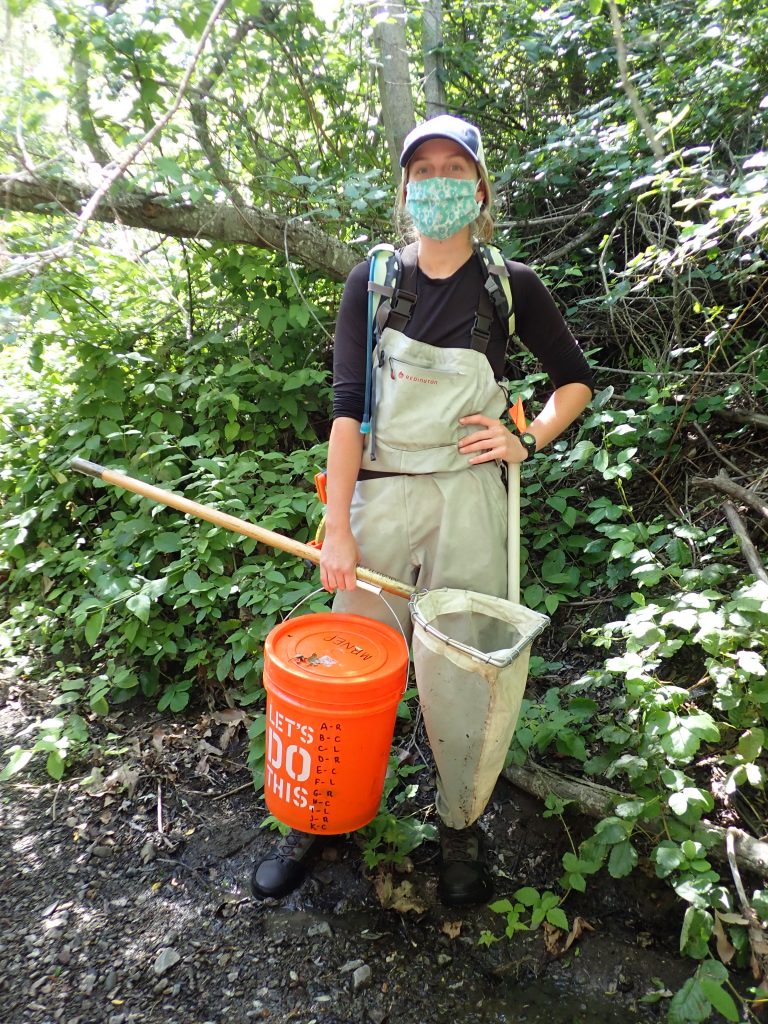
What did we catch in our net?
One of the most fun parts of the surveys is poking around in the net to see what’s living in the creek. Here are some of the notable invertebrates that we encountered this year.
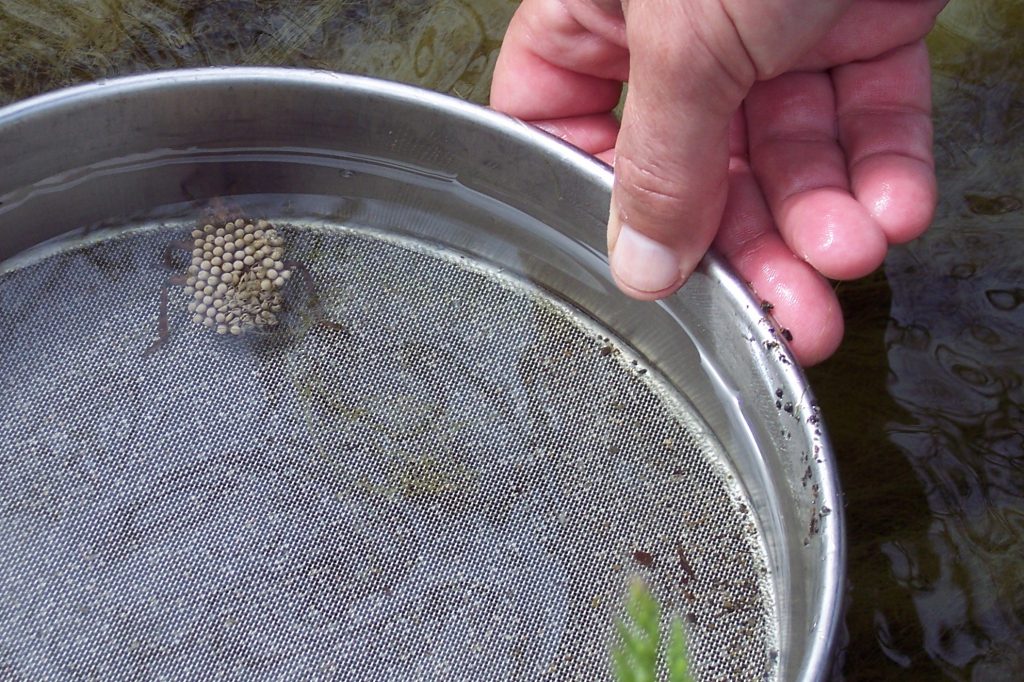
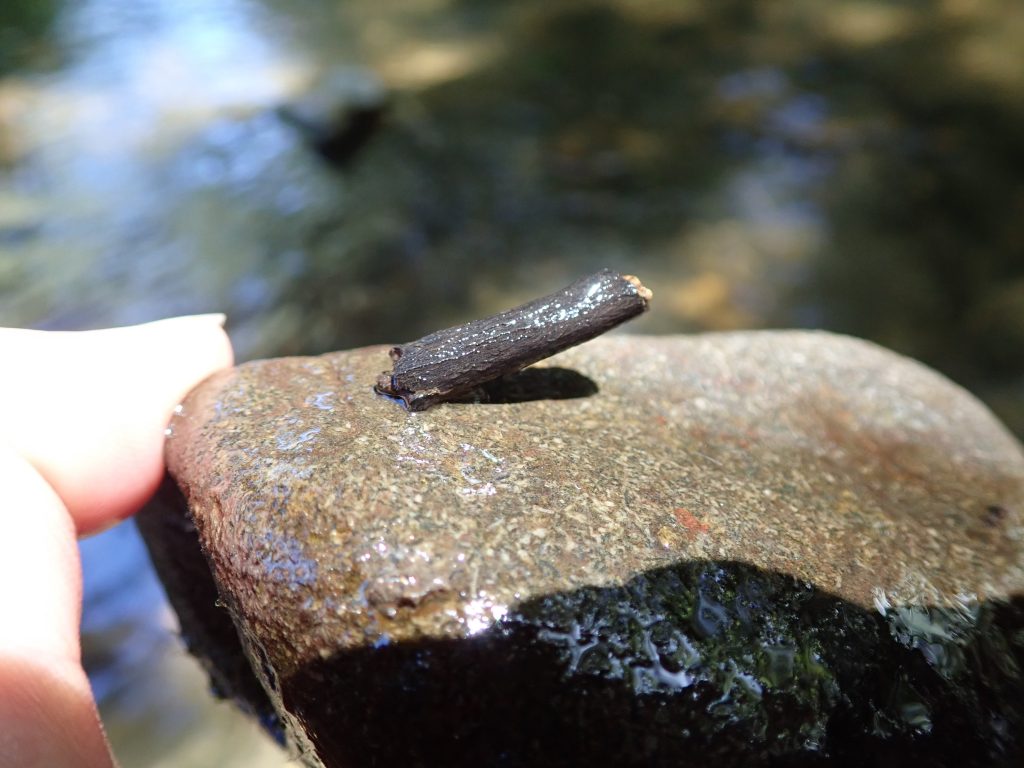
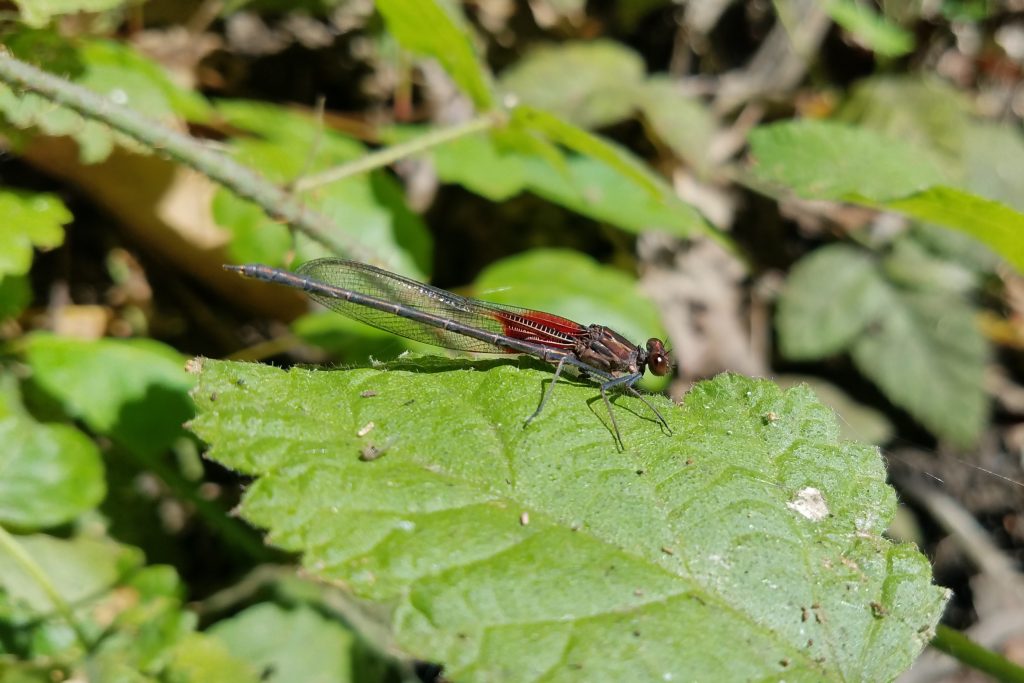
The macroinvertebrate samples were preserved and shipped to a taxonomy lab to be sorted, counted, and identified. The data will be available later this year, so keep an eye out for more details on what we learned from the 2020 effort.
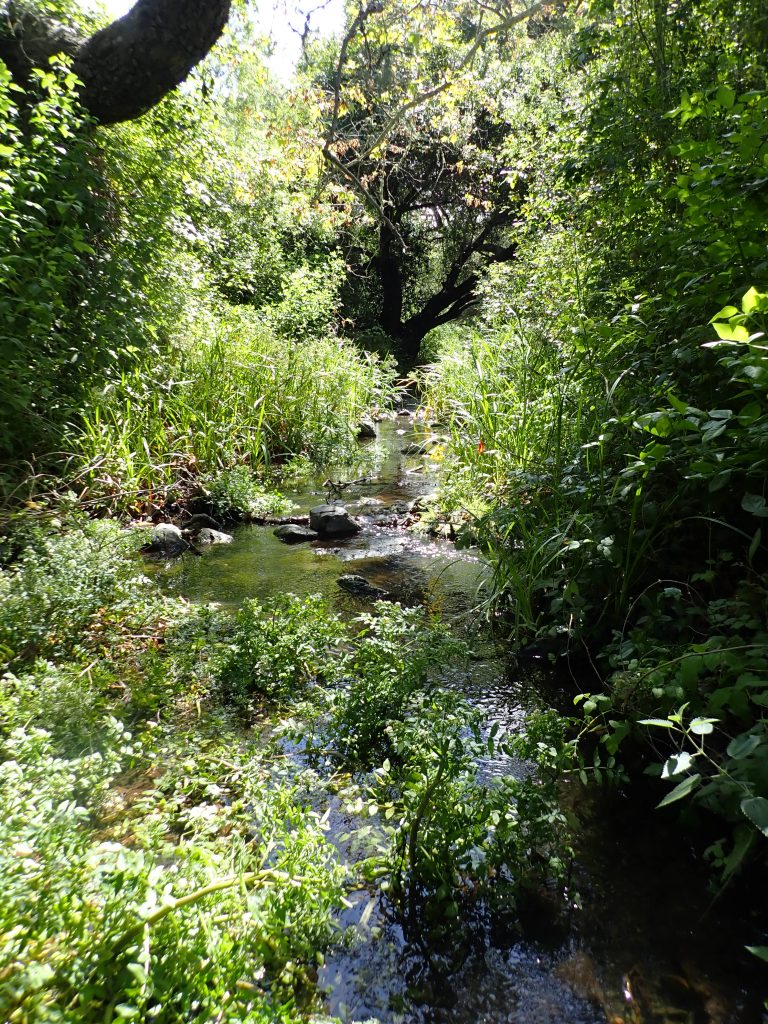
A big thank you to the Miossi Trust
The Harold J. Miossi Charitable Trust has been a long-time partner in the Estuary Program’s bioassessment monitoring, providing a total of $72,150 to support seven seasons of the effort. This high quality, long-running data set would not be possible without the generous contribution of the Miossi Trust.
A goal of the Miossi Trust is to provide educational opportunities, in particular in environmental education. Our team of dedicated volunteers typically contributes a few hundred hours each spring for bioassessment. This volunteer opportunity provides technical experience in a real-world monitoring skill. For many of our volunteers, bioassessment serves as their first encounter with fieldwork. Students in particular find the experience allows them to take knowledge gained in the classroom and apply it in real life. While both we and the Trust were disappointed that volunteers could not be involved this year, we can’t wait to welcome our volunteers back in the spring for the 2021 season.
What you can do
While we consider the 2020 season to be a success as far as the collection data, we missed our volunteers! We’ve been doing this monitoring for nearly 20 years now, so the 2020 season really emphasized the impact of volunteers. We can attest that not only do many hands lighten the load, but volunteers also bring a sense of excitement and wonder that enhances the experience for those who have done the work for many years.
Although this volunteer opportunity was not possible for the 2020 season, we highly encourage our readers, on-going volunteers, and prospective future volunteers to be active in other ways. Whether it’s through socially distanced trash clean-ups, sharing social media posts, educating yourself and others about environmental issues, or even just staying up to date with environmental organizations—your advocacy and support is still vital.
Subscribe to our weekly blog to have posts like this delivered to your inbox each week.
Help us protect and restore the Morro Bay estuary!
- Donate to the Estuary Program today and support our work in the field, the lab, and beyond.
The Estuary Program is a 501(c)3 nonprofit. We depend on funding from grants and generous donors to continue our work. - Support us by purchasing estuary-themed gear from ESTERO. This locally owned and operated company donates 20% of proceeds from its Estuary clothing line and 100% of Estuary decal proceeds to the Estuary Program. Thank you, ESTERO!
- Purchase items from the the Estuary Program’s store on Zazzle. Zazzle prints and ships your items, and the Estuary Program receives 10% of the proceeds. Choose from mugs, hats, t-shirts, and even fanny packs (they’re back!) with our fun Estuary Octopus design, our classic Estuary Program logo, or our Mutts for the Bay logo.